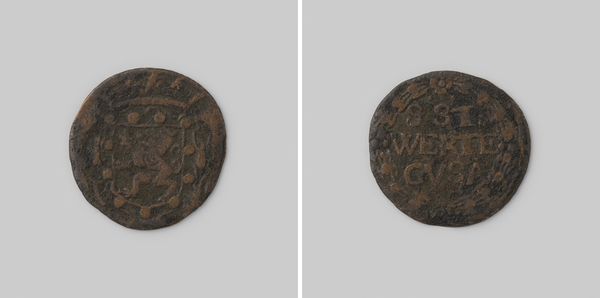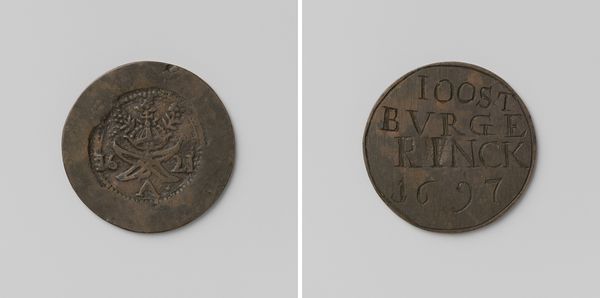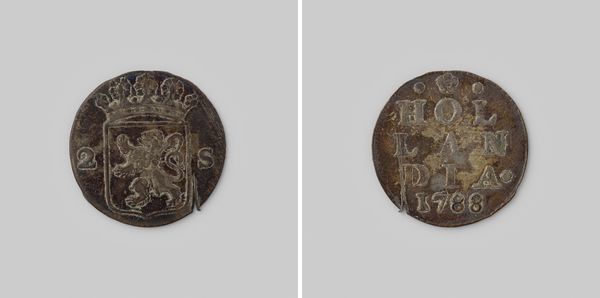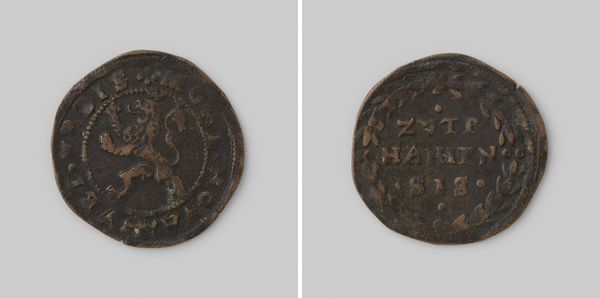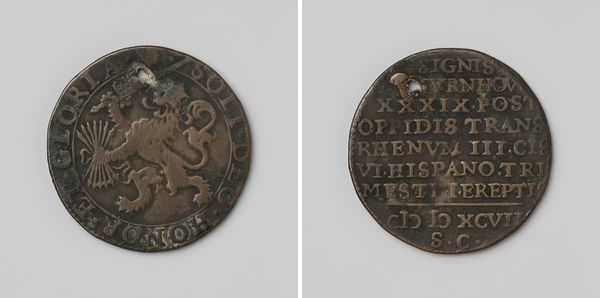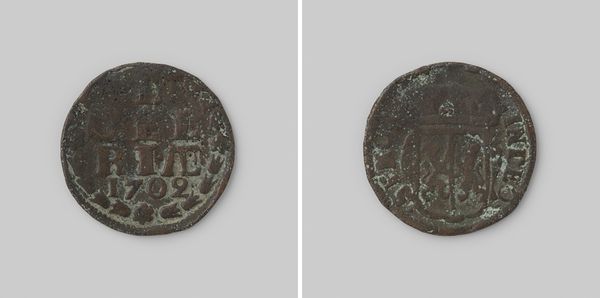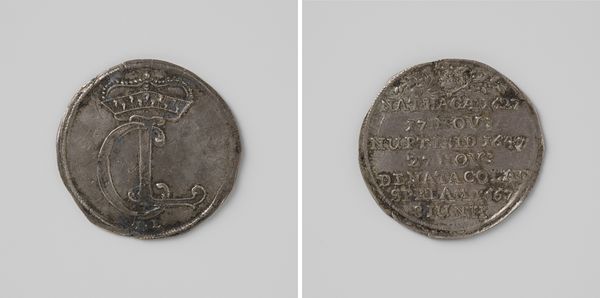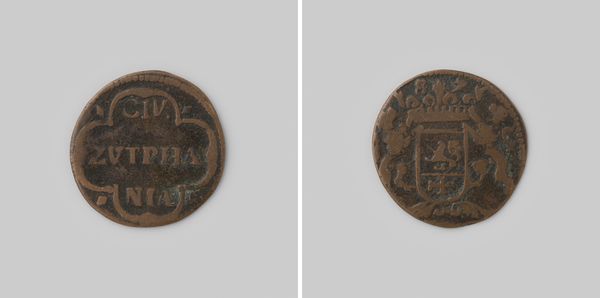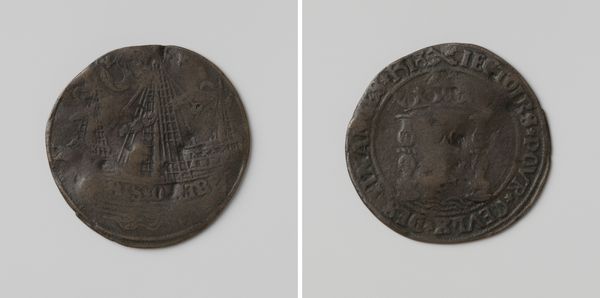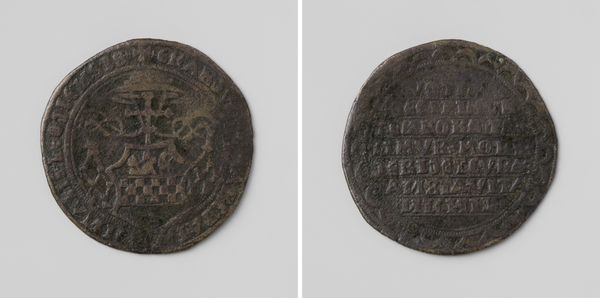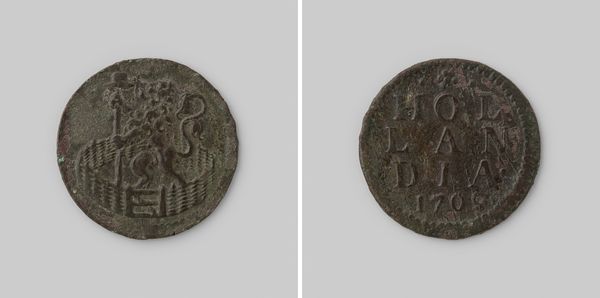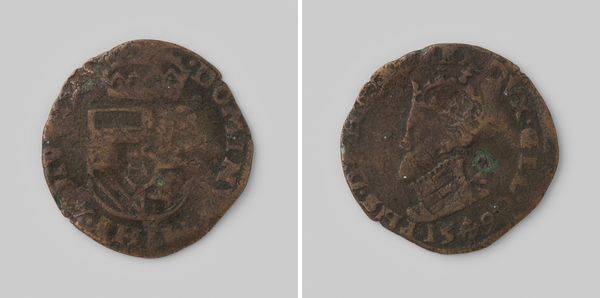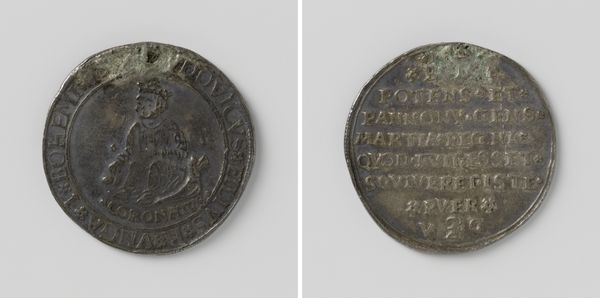
carving, metal, relief, sculpture
#
portrait
#
medieval
#
carving
#
metal
#
sculpture
#
relief
#
sculpture
Dimensions: diameter 2.2 cm, weight 2.91 gr
Copyright: Rijks Museum: Open Domain
Curator: Here we have a Dutch duit from 1739, currently held in the Rijksmuseum. It offers us a small window into the visual culture of the Dutch Republic. Editor: It's a beautiful, worn piece. I am struck by the materiality of this copper coin; you can practically feel the touch of hands, the grit of daily exchange. The oxidation gives it this wonderful aged look, revealing traces of its manufacture. Curator: Absolutely. These small denomination coins were essential to everyday commerce, circulating widely. Their imagery—here, the crowned lion rampant, a symbol of Dutch authority—reinforced political power at a very granular level. It embodies Dutch national identity in this relief, it is powerful given the scale. Editor: And consider the process. The carving, the striking—each coin represents human labor and technical skill. Copper wasn't just plucked from the earth; its extraction and transformation into currency represents a whole web of material and social relationships. Think of the miners, smelters, and die-cutters. Curator: Indeed, coins were not simply neutral objects; their design and circulation were carefully controlled by political entities like the province of Holland. Examining them provides insight into state power, propaganda, and economic policy during the Dutch Golden Age. They are tangible reminders of institutional control. Editor: I like that, it feels intimate yet grand in reach and control. But for me it all comes back to material. Even the wear patterns speak of history; the gradual smoothing of the image due to the sheer act of transacting represents use, reuse, a certain resistance to its message of control. It almost subverts its intended design. Curator: That's a fascinating point, that the usage of money and commerce becomes a subversion. It shows the fascinating duality when examining art that had practical intention within social structures. The piece demonstrates its ability to outlive and gain new, recontextualized meaning through lived experience. Editor: In the end, these coins show us that even mundane objects can tell fascinating stories, if only we attend to their making and social lives. Thank you for illuminating this piece. Curator: My pleasure. I think it demonstrates the way we can contextualize something like a simple coin through labor and the culture surrounding the people involved. Hopefully listeners feel encouraged to approach material objects like this from multiple perspectives.
Comments
No comments
Be the first to comment and join the conversation on the ultimate creative platform.
